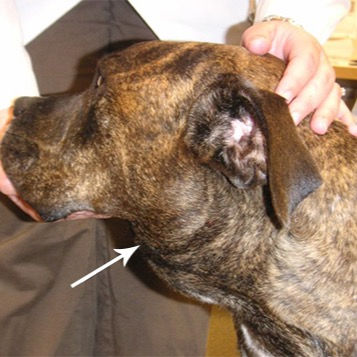All About Canine Lymphoma
- Cierra Voelkl

- Nov 6, 2020
- 3 min read
The most common malignant disease diagnosed in dogs is canine lymphoma, and there is no cure, according to the US Centers for Disease Control and Prevention ( CDC). Every year, only about 9,000 dogs are treated, and only about 1,500 are diagnosed each year. The multicentre type, which accounts for 84% of all canine lymphomas, is the most common form in dogs. According to the CDC, multicenter lymphomas account for around 80 % of people diagnosed with canine leukemia and are the most widespread, whereas other types of lymph cancer account for around 5%. According to the Centers for Disease Control and Prevention ( CDC), the second most prevalent type of lymphoma is foodborne lymphoma, which accounts for less than 10 percent of all canine lymph cancers. In dogs, there are many other types of cancer, such as lymphadenopathy, but these are much less prevalent, the CDC reports, just around 1.5 to 2.2 percent.

Lymph nodes are the most common source of lymphoma, but they may also form in other body parts, such as the liver, spleen, and bone marrow, and spread to other parts of the body. Lymphoma cells can develop from lymphocytes anywhere in the body so that lymph nodes can be swollen by lymph cells from the lungs, kidneys, liver, and other organs. According to the Centers for Disease Control and Prevention, type I lymphomas may be carried out when irregular lymphocytes are circulating. The anatomical forms of canine lymphoma are, in order of their occurrence, multicenter, polycystic fibrosis, lymphoma, monoclonal, glioblastoma, and non-malignant. Canine lymphatic cancer, which accounts for about 80% of all lymphomas, is "multicentre" and "lymphoma."

In dogs with multicentre lymphoma, a needle biopsy of the enlarged lymph node usually provides enough cells to confirm the diagnosis. In lymphoma, an enlarged mandibular lymph node may cause swelling and swelling in the bone marrow, but it is helpful to determine whether the dog needs dental care or not.

While the recommended treatment options for Canine Lymphoma are the same, the name of the stage will predict how well a patient will respond to traditional Canine L lymphoma treatment. For feline lymphoma, CHOP-based chemotherapy protocols, such as chemotherapy and radiotherapy, are used, while they are known to be the standard treatment for canine lymph cancer. If it is determined that your dog has CanINE lymphoma, your veterinarian may recommend performing further tests to determine at what stage LPHoma is already advanced.

While treatment with chemotherapy typically does not cure Canine Lymphoma fully, it might be able to help your dog achieve complete disease remission with little to no side effects. Depending on the cancer form and stage, the effects of chemotherapy differ from patient to patient. A patient with Canine L lymphoma can die of cancer within weeks or months of treatment if left untreated, but some dogs may live a happy, stable, and symptom-free life after treatment. One of the most important questions that a dog owner needs to know about canine lymphoma as soon as possible is probably the rate of survival. Please do not hesitate to contact your vet if you are concerned that your dog may have lymphoma or if you have any more questions about cancer in dogs.
The recovery time depends on the tumor type and the extent of the disease. The mean survival time following treatment for the most advanced lymphoma is 4-6 weeks. Lymph cancer cells, however, may become more resistant to chemotherapy over time, and canine lymph tumors can have more severe side effects. While it is theoretically incurable, for your dog and even for you, it can cause severe health problems.

The good news is that most dogs diagnosed with canine lymphoma are diagnosed with no noticeable disease symptoms in the substage, and dogs with substage respond most favorably. For dogs with L-lymphoma treatment, localized cancer treatment, such as chemotherapy, radiotherapy, or radiotherapy, is not usually a successful choice.
If your dog has already been diagnosed with lymphoma and is currently undergoing treatment, or if you are looking for information on disease prevention, you will find the following tips for treating and combating dog lymphoma on the Canine Lymphomas website. This website provides information for dogs that have recently been diagnosed or that you fear may show signs of the disease. For more information on this website, please visit the page Types of Canines with Canine Lymphoma.
PIN IT:

.png)





Comments